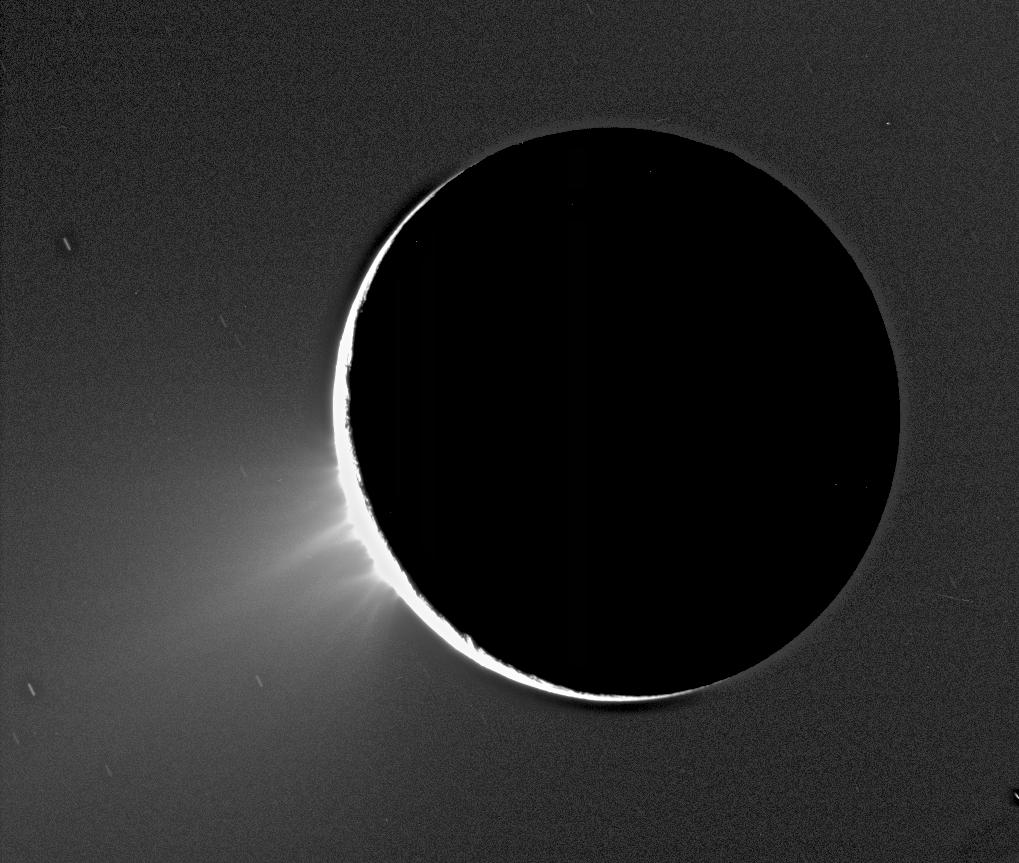
Sorry, Moon but my favorite satellite doesn’t even orbit the Earth.
Enceladus is my favorite moon, despite its diminutive size — its diameter is only around 500 km. It circles Saturn and while it only ranks as the ringed planet’s sixth largest moon, it is perhaps the most fascinating.
A decade of images courtesy of the Cassini spacecraft and the Hubble Space Telescope show amazing plumes of icy material spouting from one or more underground sources. To date, astronomers and planetary scientists have catalogued over 90 geyser-like jets on the surface of Enceladus.
More recently, a couple of year’s ago, NASA’s researchers confirmed the presence of a vast subsurface ocean of liquid water beneath Enceladus’ icy crust. Scientists believe this ocean powers its many geysers or cryovolcanoes. Moreover, the many geysers spew a particle cocktail of ices and organic compounds. It is this mixture of liquid water and organic chemistry that has many scientists agog — pondering the possibility of life beyond the shores of our home planet.
Catch the latest on the search for possible signs of life on Enceladus from Scientific American, here.
Image: Fountains of Enceladus. Recent Cassini images of Saturn’s moon Enceladus backlit by the sun show the fountain-like sources of the fine spray of material that towers over the south polar region. Courtesy: NASA/JPL/Space Science Institute. Public Domain.
